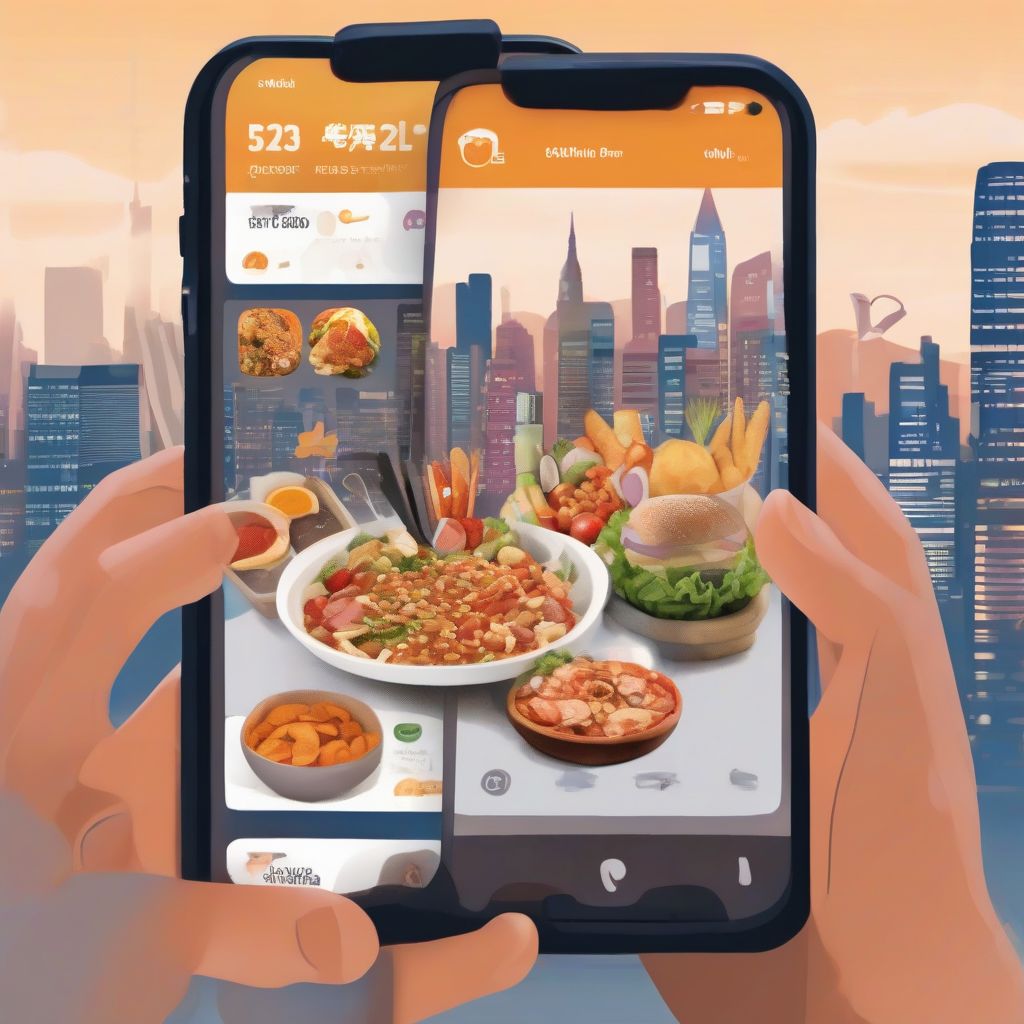Imagine this: You wake up to a gentle alarm on your smart speaker, the scent of freshly brewed coffee wafting in from your app-controlled coffee maker. After a quick glance at your health tracker’s sleep analysis on your phone, you head to the kitchen for a breakfast smoothie, the recipe pulled up on your digital assistant. This is the reality of modern living – a tapestry woven with technology.
As a nutritionist and meal planning coach, I’ve spent the past eight years guiding individuals toward healthier lifestyles. And I’ve witnessed firsthand how technology, while undeniably transforming our lives, has a profound and multifaceted impact on our living environments and, consequently, our relationship with food and well-being.
The Double-Edged Sword of Convenience
Let’s face it – technology has injected incredible convenience into our lives. Grocery shopping is a few clicks away, recipes are readily available online, and meal delivery services bring food straight to our doorsteps. This ease, however, can be a double-edged sword.
While time-saving, these advancements can lead to a disconnect from our food. We’re less likely to engage in mindful grocery shopping, appreciate the origin of our food, or invest time in meal preparation. This disconnect can impact our food choices, potentially leading to a diet reliant on processed foods and quick fixes.
A World of Information (and Misinformation)
The digital age has ushered in an era of unprecedented access to information, including nutrition and wellness. From scientific research to health blogs, we’re bombarded with advice on what, when, and how to eat.
However, this abundance of information comes with a caveat – misinformation. Separating evidence-based guidance from fads and misleading claims can be challenging. This information overload can lead to confusion, anxiety around food choices, and potentially unhealthy dietary practices.
 Technology and Food Delivery
Technology and Food Delivery
The Rise of the “Always On” Culture
Technology has blurred the lines between work and personal life. The constant connectivity, while beneficial in many ways, can contribute to stress and sleep disturbances. This “always on” culture can impact our eating habits, leading to emotional eating, mindless snacking, and poor food choices.
The Power of Technology for Good
While the challenges are real, it’s crucial to remember that technology itself isn’t the villain. It’s a powerful tool that, when used mindfully, can be harnessed to cultivate healthier living environments.
Leveraging Technology for Healthier Habits:
- Mindful Meal Planning Apps: Embrace technology that encourages thoughtful meal planning. Numerous apps allow you to create grocery lists, discover recipes based on dietary needs, and track your nutritional intake.
- Virtual Cooking Classes and Communities: Connect with certified nutritionists and chefs through online platforms for expert guidance and to explore new, healthy recipes.
- Fitness Trackers and Health Apps: Utilize wearable technology and health apps to monitor your activity levels, sleep patterns, and hydration.
- Blue Light Filters and Digital Detox: Implement blue light filters on your devices and schedule regular “digital detox” periods to improve sleep hygiene and manage stress levels.
The Importance of Balance and Mindful Consumption
The key takeaway? Moderation and a mindful approach are crucial when navigating the impact of technology on our living environments and nutritional well-being. Just as we carefully choose the foods we nourish our bodies with, we must be discerning about the information we consume and the technologies we allow into our lives.
Embracing a Holistic Approach
Ultimately, creating a healthy living environment in our tech-driven world involves a holistic approach.
- Prioritize Real Food: Aim for a balanced diet rich in fruits, vegetables, lean proteins, and whole grains.
- Cook More at Home: Set aside dedicated time for meal preparation, involving family or housemates to foster a sense of connection and mindful eating.
- Cultivate Mindful Eating Practices: Slow down during meals, savor each bite, and listen to your body’s hunger and fullness cues.
- Limit Screen Time: Designate specific times for technology use and create tech-free zones in your home, particularly in areas where you eat or sleep.
Our Technological Future: A Call to Action
As technology continues to evolve, so too will its impact on our lives. By embracing a balanced approach, utilizing its strengths while mitigating its potential downsides, we can create living environments that nurture both our physical and mental well-being.
What steps are you taking to navigate the intersection of technology and wellness in your own life? Share your thoughts and experiences in the comments below.
No products found.
